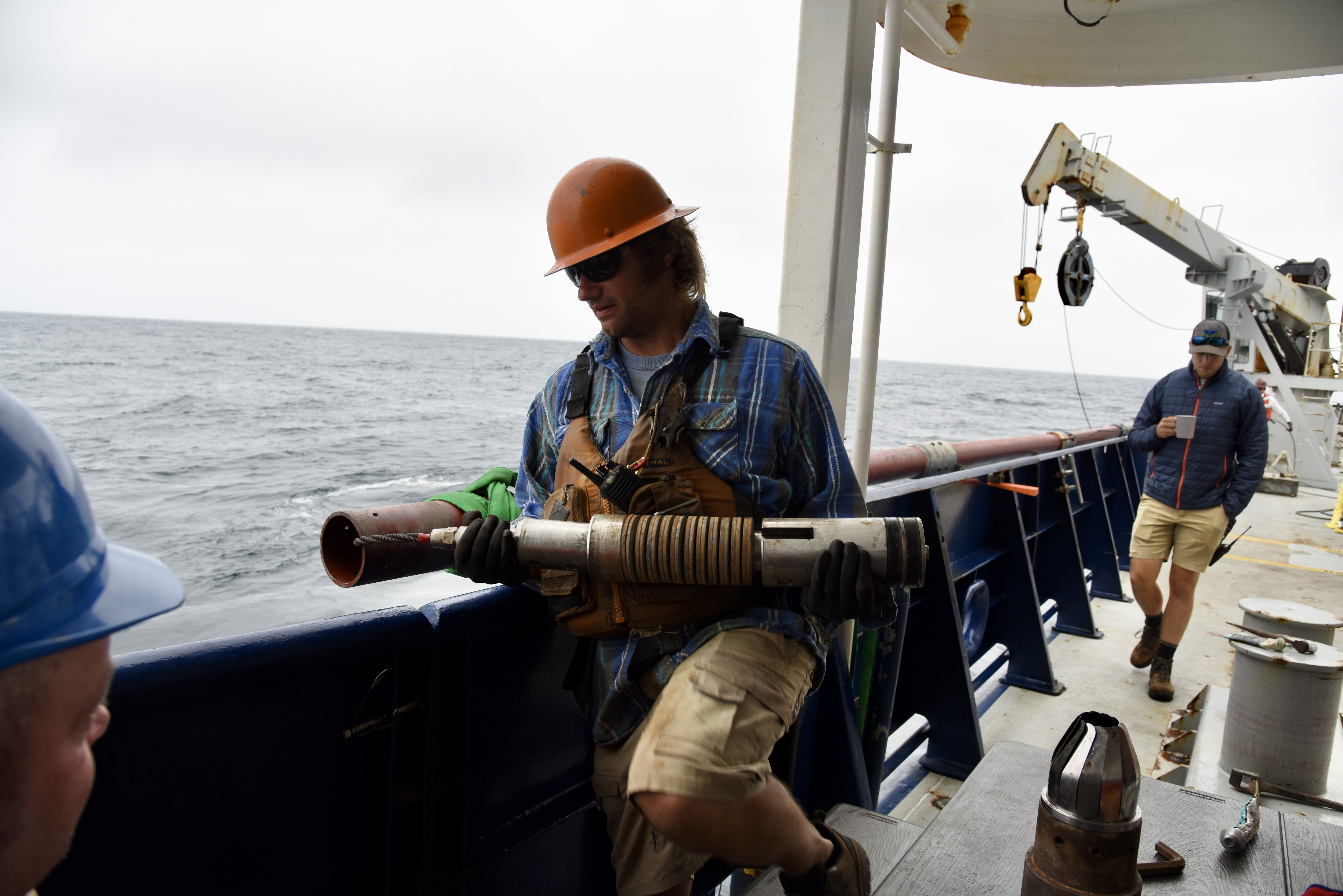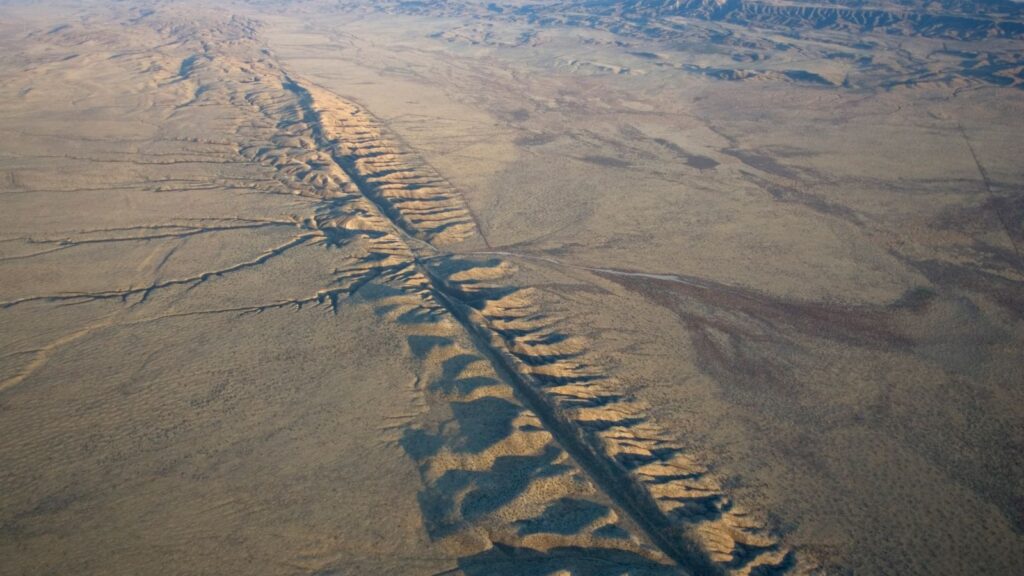A new study suggests that the “Big One” of the Cascadia subduction zone in the Pacific Northwest could trigger similarly severe earthquakes on California’s San Andreas fault.
The discovery is based on sediment taken from the ocean floor off Cape Mendocino, California, and off the coast of Oregon. It is at Cape Mendocino that California’s famous San Andreas fault ends and the Cascadia subduction zone begins.
you may like
But if the two fault systems are indeed in sync, it could pose major problems for disaster relief, said study lead author Chris Goldfinger, a paleoseismologist and professor emeritus at Oregon State University.
“It’s going to be really difficult to put these things side by side,” Goldfinger told Live Science. “We don’t have enough resources to successfully deal with even one of these, and two of them is going to be very difficult.”
possibility of earthquake
Cascadia can produce very powerful earthquakes. The famous story goes that in 1700, an earthquake believed to be between 8.7 and 9.2 in magnitude struck the region, sending a devastating tsunami all the way to Japan. These earthquakes are caused by the movement of three oceanic plates (Explorer, Juan de Fuca, and Gorda) sliding beneath the North American continent.
The San Andreas Fault, on the other hand, is a strike-slip fault where rock masses on both sides of the fault pass through each other horizontally. The largest known earthquake in the northern San Andreas was the 1906 San Francisco earthquake, which had a magnitude of approximately 7.9. Because the fault passes through densely populated areas, it can cause severe damage, such as the 1989 Loma Prieta earthquake that killed 63 people.
The two fault systems meet in an area known as the “Triple Junction” off the coast of Mendocino. Goldfinger and his colleagues took part in a research cruise in 1999, drilling core samples from the Cascadia ocean floor, looking for signs of ancient earthquakes. When a large earthquake occurs on land, sand and sediment called turbidites can be washed away underwater. Turbidites follow a pattern in which coarse sediments first precipitate out of the water, forming layers. Finer sand and silt follow, forming another layer.
However, during the voyage, a mistake caused the ship to sail 90 miles away from its intended location. The scientists were trying to take a nap between work and did not realize their mistake until the ship arrived.
“I was like, ‘Oh, it’s about half the size of San Francisco,'” Goldfinger remembers.
you may like
I decided to take a core sample at that location anyway. When the team then analyzed the sample, they found it contained a mystery. The turbidites in the sample did not have the typical coarse layer at the bottom and finer layer at the top.
“This original core of San Andreas had deposits that looked like they were upside down,” Goldfinger said. “There was sand on top.”
evidence of the upside
The researchers had no explanation for this reversed pattern. Also, initially they had no explanation for another strange mystery in these offshore samples. Cores taken south of Triple Junction in the northern San Andreas region appeared to show earthquakes that matched eerily well the timing of earthquakes taken north of Triple Junction in Cascadia. They found that over the past 1,300 years, there have been 18 potentially earthquake-generated turbidites in Cascadia, and 19 offshore in the northern San Andreas. Ten of them appear to have been deposited within 50 to 100 years of each other.

Even more curiously, in three cases, the upper coarse sands of these overturned turbidites were mixed with the lower fine sands, suggesting that the upper layers sank while the lower layers were still moving. This means that the two layers were deposited within hours to days of each other. These three events include the Cascadia earthquake of 1700 and earthquakes 1,200 and 1,500 years ago.
It took years to perform additional radiocarbon dating, collect corresponding seismic records from other sources such as California lakebeds, and ponder the meaning of these strange “doublet” turbidites. But eventually, Goldfeiner said, he realized that these San Andreas turbidites could represent two different earthquakes. One is from the distant Cascadia region, which shook off only lighter silt and sand, and the second is from an earthquake immediately following the San Andreas earthquake, which may have locally moved stronger and coarser material.
“That would explain it,” said Mr. Goldfinger. “That would explain the long-standing matchup…that’s what broke the dam.”
In a new paper published Sept. 29 in the journal Geosphere, researchers argue that a large earthquake in Cascadia could transfer stress to nearby San Andreas, which could trigger a San Andreas earthquake shortly thereafter.
Harold Tobin, a seismologist at the University of Washington who was not involved in the study, said it is not unheard of for earthquakes to trigger each other. However, most of those examples occur in the same fault zone.
“There is no other example that I can think of where two different types of plate boundary faults are so tightly coupled as the one proposed in this paper,” Tobin told Live Science. The work was done carefully, he said, but “for me, the jury is still out as to whether there are other possible explanations for the deposits.”
Cascadia and the northern San Andreas region are highly seismically active, and many other faults can cause earthquakes, Tobin said. Sediment interpretation is complex and radiocarbon dating is fraught with uncertainties.
“There are so many reasons why this is a complex system,” Tobin says. “This is an interesting set of observations, but more detailed studies are needed to confirm it.”
Goldfinger said he hopes the study will encourage Cascadia geologists and San Andreas geologists to work more closely together to conduct detailed studies.
“We all have a lot to learn from each other,” he said. “I hope that this will gradually improve the quality of science on both sides.”
Source link

